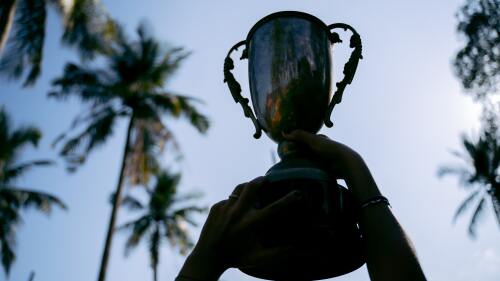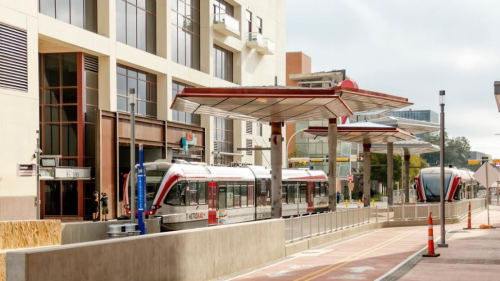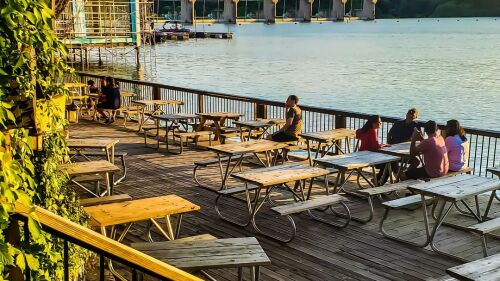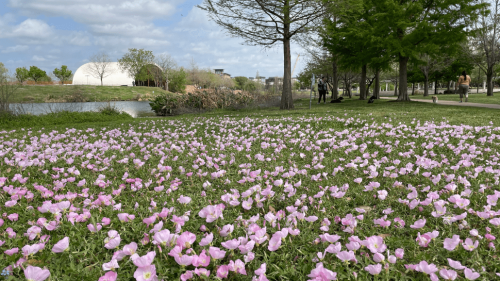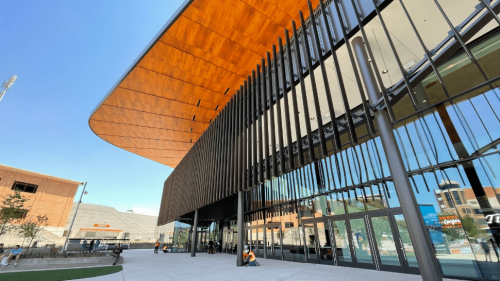Walkable communities, delicious food, and 150+ years of history: today, we’re diving into the sights and stories of Austin’s Bouldin Creek neighborhood.
As part of our mission to visit every neighborhood in the Capital City (If you missed our last spotlight, check out our guide to Mueller here), we took a trip to the south Austin area. Here’s what we learned.
Want us to write about your neighborhood next? Request your area for our next spotlight here.
Need to know
Although Bouldin Creek began as a largely Black neighborhood, after decades of demographic changes, gentrification, and rising home prices, the population of Bouldin Creek is now largely white.
About 6,000 people live in the neighborhood, which is considered very walkable, with access to South 1st Street, South Lamar Boulevard, and South Congress Avenue.
Housing in Bouldin Creek is eclectic and mixed, with small, early 1900s bungalows often located right next to ultramodern, million-dollar homes. In recent decades, the median home price for the area has spiked, currently reaching $1.1 million — a 29% increase compared to last year.
The early days
Bouldin Creek is one of Austin’s oldest neighborhoods. In fact, Bouldin Creek was one of Austin’s first “suburbs.”
The neighborhood, now named for a South Austin farmer + slave owner, was a home for formerly enslaved residents after emancipation in the late 1800s and early 1900s.
Known as Brackenridge at the time, much of the area frequently flooded, making property cheap and less desirable for wealthy, white residents — and one of the few options for Black residents as Austin experienced significant racial segregation.
For several decades, Black families and craftsmen built up businesses and communities in Bouldin Creek. Many historic Black churches remain standing today, including St. Annie African Methodist Episcopal Church and the Goodwill Baptist Church.
In the mid-1900s, Hispanic settlement moved into the area. South 1st Street in particular is still home to some of Austin’s longest-standing Hispanic-owned businesses, such as Cantu’s Mexican Imports and the recently closed La Mexicana Bakery.
One of Bouldin Creek’s most significant historic institutions is the Texas School for the Deaf, which was established in 1856 and encompasses 65 acres of the neighborhood. Although rebuilt in the 1900s, the school remains in the same location and is the oldest continually operating public school in the state.
Arts + culture
Visiting Bouldin Creek is as easy as taking a walk down South 1st Street.
See some of the city’s most famous street art, such as the ”Greetings from Austin” mural and the “You Belong Among the Wildflowers” mural. Continue your arty experience by picking up some locally made pieces at the Art for the People Gallery or wandering through the Casa Neverlandia Art House.
If getting outdoors is more your speed, slip on some sneakers and head to the West or East Bouldin Creek Greenbelt.
Shops
Bouldin Creek is home to some great shopping, with stores like:
Eat + drink
From high-end to casual, Bouldin Creek is home to some of the city’s best bites. Try out:
- Bouldin Creek Cafe
- Polvos
- Lenior
- South First Food Court
- Elizabeth Street Café
- Once Over Coffee Bar
- Sugar Mama’s Bakeshop
- Underdog
- Dovetail Pizza
Where to live
If you’d like to find your next home in Bouldin Creek, take a look at these on-the-market options:
- 311 W. Monroe St. | 4 BD, 4 BA | $3.15 million | Live a luxury modern dream at this home featuring extra large windows, a breakfast bar, and open floorplan.
- 711 W. Monroe St. | 3 BD, 2 BA | $989,000 | This property is walking distance to South Congress, Zilker Park, and South Lamar.
- 1109 W. Annie St. | 3 BD, 3 BA | $1.25 million | Skylights, wood floors, and electric vehicle charging are just some of the features in this home.
Did we miss anything? In a city like Austin, of course we did. Add your favorite Bouldin Creek spots to our interactive map here:









